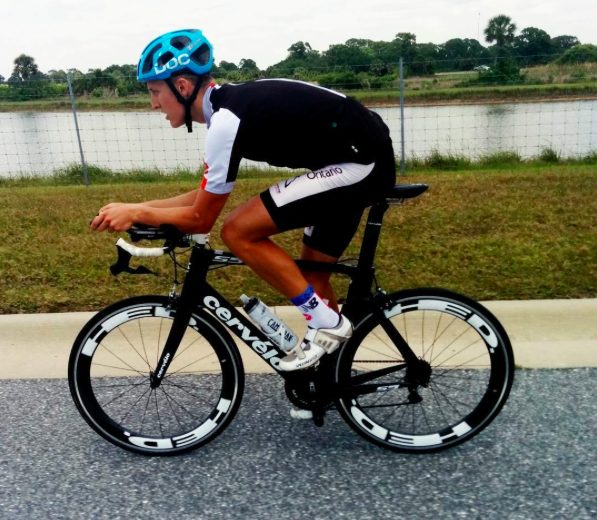Catching up with John Erik Rasmussen after St. Anthony’s Triathlon

Ancaster, Ontario’s John Erik Rasmussen didn’t have the race he was hoping for at last weekend’s St. Anthony’s Triathlon in St. Petersburg, Florida. Despite a tough and technical turn on the course resulting in a crash, he kept his head in the race and followed through to the finish line, finishing in a respectable top 15. TMC caught up with Rasmussen to see what happened in the race, how he overcame the issue and his advice for triathletes who encounter a setback on race day.
TMC: How did you feel heading into the race last Sunday?
JER: I felt really good heading into St. Anthony’s. It was my first race outside of the ITU of the season and I felt like I could take off some of the mental pressure I had put on myself. It was a good chance to just race a triathlon because that’s what I love to do. I wasn’t there to chase points, it was just a chance to be the best I could be on race day. It was a great mental place to be in. The competition was obviously very intense, but I knew I could race at that calibre and I was ready to put my best performance forward.
You crashed in T1. What happened?
It was one of the first turns in the race. It was a left-hand turn maybe two or three kilometres into the bike. The road was cobblestone at that point and I just was going too fast. I was inexperienced and didn’t appreciate how much faster I was going with a disc wheel on the time trial bike format. I turned a little too sharply, hit a bump, almost corrected, then hit a pylon, and then finally lost the battle with gravity, inertia and the cobble road. I hit the ground on my left side and got some road rash and bruising on my shoulder, elbow, hip, knee and ankle.
Instead of pulling out of the race, you kept going and pulled up an impressive 13th place. What made you decide to stay in?
I’ve crashed once before in a race, but this was certainly the most intense crash I’ve had on bike while racing! I decided to keep racing for a few reasons. I was in a really good mental state before and during the race. I really believed in myself and I was ready to have my best race to date on that day. I crashed, I got myself up and nothing had changed. I was bloody and in a lot of pain, but I still was ready to go. I couldn’t correct what happened, but I could still put my best race together. If the race became tactical ahead, I could catch up and put myself back in contention.
Also, I could deal with the pain and didn’t want to quit. It hurt a lot, but the thought of quitting was far worse. My Dad and I drove down to Florida for the race and if I was able to finish the race, I was going to.
Would you do anything different if faced with the same situation again?
I would brake. I was thinking too far ahead. I saw (winner) Cameron Dye making his move around the corner and felt I needed to follow it. What I needed to do was brake, look for bumps in the road and corner safely. The race wouldn’t be won on one corner, but you can certainly take yourself out in one.
Advice for age-groupers who encounter a setback on race day?
Regardless of the setback during a race, I would say just take two deep breaths. Perception is everything. For instance, before the race we weren’t allowed to swim warm-up until 10 minutes before the start. I woke up that morning and had planned for a longer swim warm-up but didn’t let that influence my race.
I did the same on the bike after the crash. You have to remind yourself that whatever has happened is now in the past and you can no longer control it. What you can control is how you react. When something doesn’t go as you planned, you have ultimately two choices — let the scenario control you, or control it yourself.
You can practice this in training. In a swim workout, take your googles off during some of the fast intervals. What happens in a race if your googles come off or fill with water? How are you going to respond?
You could also practice changing tires on your bike quickly or putting the chain back on (Hint: press the bottom of your derailleur towards the front chain ring. The chain goes on a lot easier and if done correctly and only one hand gets dirty). Remember to take your two deep breaths, be calm and do the best that you can do.
What’s next for you?
Right now I am just focused on recovering properly. I want to get back to training right away, but I know that it’s better to heal and take a few days than to start training right away and have nagging injuries all year. It’s kind of like braking before a corner. Take a small brake (or break) now, and then everything else will flow along quite nicely.

